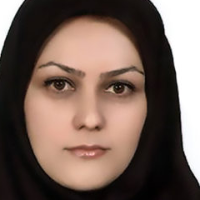Cultural elements of Doord Mirrors by Houshang Golshiri and its based on Ivir's
A word in the source language has different implicit and indicative meanings, in such a way that it is difficult to choose words with the same meaning and equivalent, even in a foreign language. Also, if this word has a special cultural value, it becomes much more difficult to transfer all its semantic layers to another language, especially about culturally heterogeneous languages and because different languages have different cultural, social and religious aspects, there are countless criteria in the translation of such cultural elements.
The Persian text of the novel Doord Mirrors is expressive of customs and full of cultural elements. For this reason, we analyzed the cultural elements of this novel by relying on the descriptive-analytical method. The aim is to identify cultural differences and how to reflect changes in the context of speech in narrative works and to examine the translation of cultural words and expressions based on intercultural and interlinguistic differences. Evir's classification is based on words and since cultural elements appear first at the level of language vocabulary, we have chosen this model to investigate the translation of cultural elements in Doord Mirrors. For this purpose, based on Newmark's classification and Hashemi and Ghazanfari- Moghadam's portfolio, we extracted cultural elements and showed their number in the form of a diagram. Then, we evaluated its translation method based on the model of Evier (1987) and showed it in the form of a table and the questions put forth are: What are the basic strategies of the translator and the level of success in transferring the cultural elements of the novel Aineh Darar to the target language? Which one of the strategies of the Ivir model is used more frequently in the translator's translation?
Peter Newmark has divided the cultural elements into five categories according to the patterning of Naida's cultural vocabulary and Ivir proposed seven methods for translating cultural elements. It is believed that the translator tries to bring these two languages and two cultures together with one of the following strategies: 1. Transference, 2. Definition, 3. Literal translation, 4. Substitution, 5. Lexical creation, 6. Omission, 7. Addition. Hashemi and Ghazanfari-Moghadam (2013) in the article "Indigenization of Newmark's five-fold model of cultural elements" have pointed out that in the analysis of some data. There are cases that do not fit into any of Newmark's classification. They added four more classes to this classification, which are:A. colloquial phrases and idioms ;
B. units and figures ;
C. Address titles and items ;
D. Visual, auditory, tactile and fragrance items .
They both believe that there is no suitable branch to address titles in Newmark's classification and in the Persian language. The use of these items is more varied according to the degree of importance and adherence to religious and political issues, for this reason, the use of these forms can be categorized as "geographical and social dialect and accent”. We also put units and figures in the category of political and administrative affairs regarding the "phrases and terms" that Hashemi and Ghazanfari-Moghadam added to this classification, we can place it together with the "ecology" class under the main class group entitled Environment and Place. Therefore, in the classification of the desired samples in this research, we used the
Salim Abdul Amir Hamdan stayed in Iran for a long time, learned the Persian language and because of her interest in contemporary Persian literature, published translations of the works of writers such as Hoshang Golshiri, Mahmoud Dolat-abadi, etc. For this reason, in some cases, she was able to pass the cultural elements of the novel through the cultural filter. He based her equivalence on substitution and tried to recreate the message approach in the form of the target language. In this novel, according to the amount of use of cultural elements, the component of idioms with 95 items has the highest frequency and the component of cursing and swearing has the least frequency with no items. Substitution with a frequency of 50% and 57% and borrowing with a frequency of 20% and 23% are the most used solutions by translators in translating cultural elements. And this shows that Salim Abdul Amir Hamdan did not use the combined method of borrowing with definition and did not define (clarify) the phrases for the reader in the text or footnote, but the positive point of her translation is the little use of literal translation and the negative approach of removing and not using the addition component.
پرداخت حق اشتراک به معنای پذیرش "شرایط خدمات" پایگاه مگیران از سوی شماست.
اگر عضو مگیران هستید:
اگر مقاله ای از شما در مگیران نمایه شده، برای استفاده از اعتبار اهدایی سامانه نویسندگان با ایمیل منتشرشده ثبت نام کنید. ثبت نام
- حق عضویت دریافتی صرف حمایت از نشریات عضو و نگهداری، تکمیل و توسعه مگیران میشود.
- پرداخت حق اشتراک و دانلود مقالات اجازه بازنشر آن در سایر رسانههای چاپی و دیجیتال را به کاربر نمیدهد.


